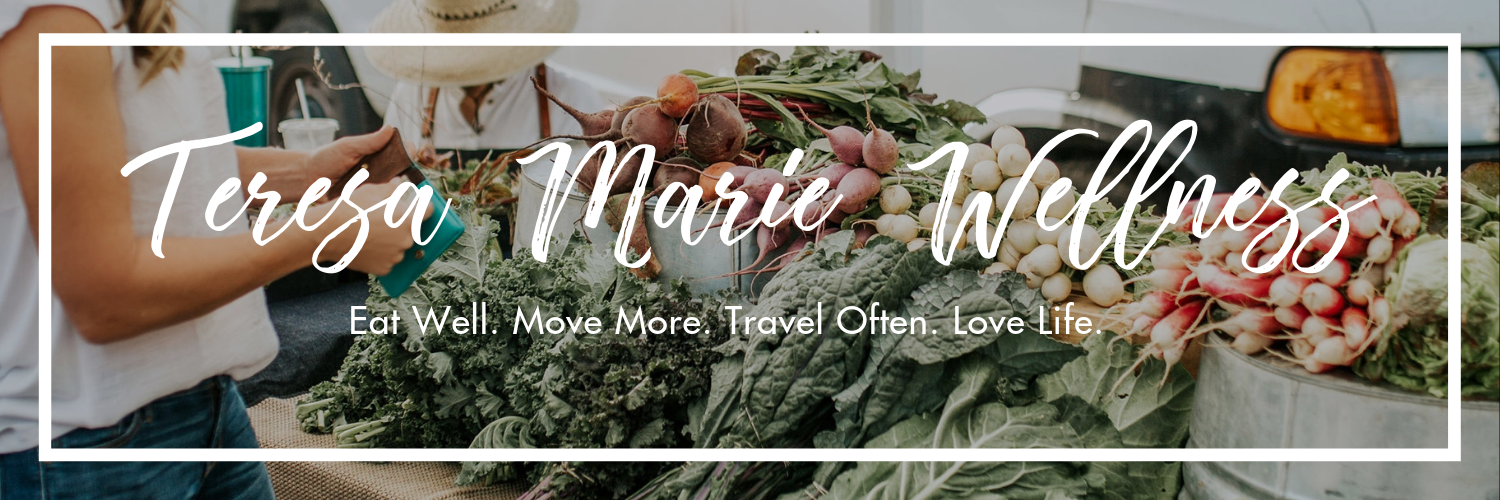Is it Healthier to Juice or Blend Fruits and Veggies?
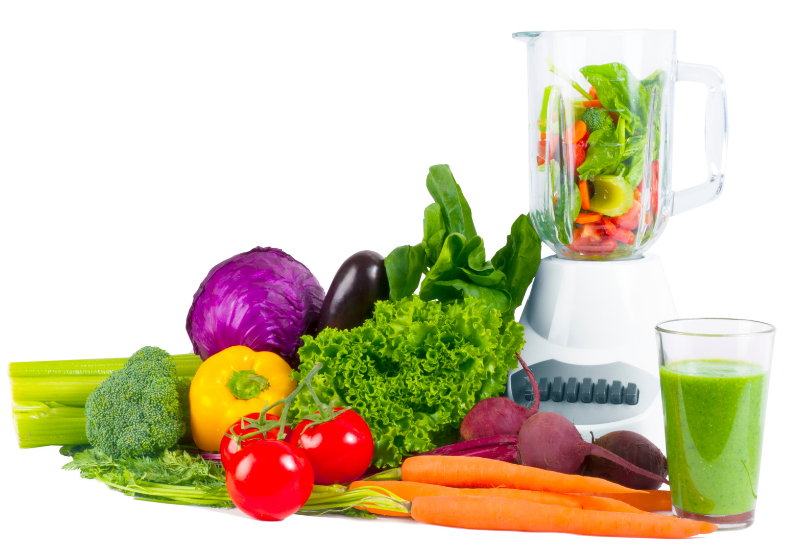
If you’ve found yourself stumped and ever wondered if is it healthier to juice or blend your fresh produce, I have all the answer for you here. In short, they are both excellent for you, which I why I recommend leveraging liquid plants. And also why both are essential components of my DIY 3-Day Detox. But both also come with potential pitfalls you need to be aware of if you’re going to be incorporating them into your lifestyle.
The Clean and Colorful Solution
In 2015 I created the Clean and Colorful Solution. It is a simple, universal dietary approach that includes three fundamental diet strategies behind unprocessed plant forward eating:
- Eating More Whole Food (Less Processed)
- Eat all 5 colors every day (From Plants)
- Leverage Power of Liquid Plants (Juices, Smoothies and Soups)
Following those simple guidelines will leave you brimming with more energy and glowing from the inside out. But when looking at the third strategy, people always ask me one of these three questions:
- What’s the difference between juicing and blending?
- Can I use a blender to make my juice?
- Which is better for you, juices or smoothies?
So let’s get onto answering those questions now…
The Juicing vs Blending Confusion
In general there seems to be quite a bit of confusion between the two ways to create liquid plants. I know this because of the 2nd question I get all the time. Can I make juice in a blender? And while technically you can, it’s just cumbersome and a lengthy process. And that is why the juicer exists and it is the fundamental difference between the two methods.
Below I’ve broken out juicing and blending with functional distinctions, benefits and potential pitfalls.
Juicing = Raw Juice
Raw juices are made in a juicer. You can put just about any tough, fibrous veggie in a juicer and it will be pulverized and the raw juice will be separated from its solid product. Juices tend to be higher in veggies, since many fruits are too soft for the juicer.
Generally, the juice is consumed ASAP and the fibrous waste is discarded. There are some ways to make use of this pulp in soups, baked goods and stuffing. If you have more questions about how to get started juicing, check out my Beginner Juice Guide.
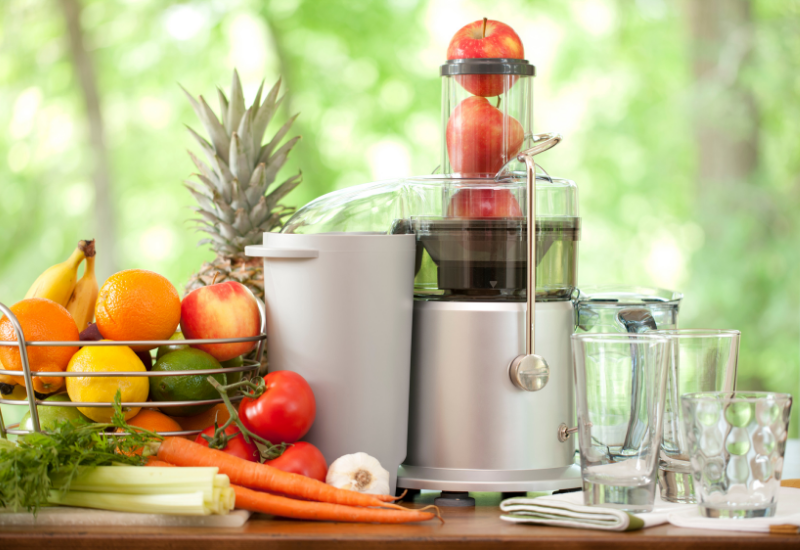
Benefits of Juicing
Since the fiber has been removed, the juice takes like zero work to digest and the key nutrients are highly bioavailable. That means your body can easily absorb the fresh, raw enzymes, vitamins, minerals, phytochemicals and important antioxidants and put it to use ASAP. Drinking juice on an empty stomach can also ensure the best absorption of key nutrients.
Another benefit comes is the highly alkalizing impact of green juice and strong health boost that comes with it. Because the juice essentially digests itself and delivers only top notch nutrition, your body can divert its attention to other processes like building radiance, fighting disease and preventing aging.
Potential Pitfalls of Juicing
The pitfall here is clearly the waste that is produced and the health boosting benefits of fiber and some additional nutrition that is lost with it. The best way to manage this is to find recipes to use the pulp or create a compost bit.
Another potential pitfall is that it takes some time. There is veggie prep, pulp disposal, cleaning that can take 15 min from start to finish. Here are some time saving juicing tips, but this can be a barrier to the healthy daily habit.
Blending = Smoothies or Soups
Smoothies are made in the blender. Whether it be a fancy, high-speed blender or regular one you’ve had for years. You can also blend cooked veggies to make an amazing savory soup with many of the same benefits of a smoothie. If you have the fancy blender, they have the capacity to handle tougher veggies. But generally smoothies contain softer fruits and some soft greens like kale and/or spinach.
You can also easily add a variety of any super food or protein powder you want to add, making them more suitable for meal replacements than a juice. You consume a soup or smoothie, you eat the entire blended portion of the plants, there is no fibrous waste.
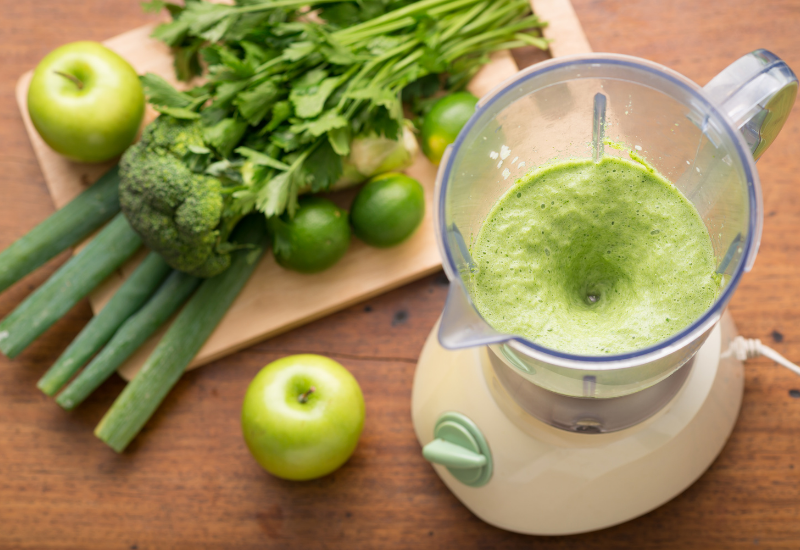
Benefits of Blending
The key benefit comes from the nutrition the fiber delivers becuase it is not removed in the blending process. Plus there is no waste which can make the process of making a smoothie much easier. Realistically, if it’s easier to do, you’re more likely to do it. So if you’re more likely to do it, then that is a pretty outstanding benefit.
Because the blender can blend up…anything, you can easily sneak in other ingredients like tofu, greek yogurt or milk, that do provide protein and fat. This makes them more suitable for meal replacements and other superfoods for improved health benefits.
Potential Pitfalls of Blending
The potential pitfall is sugar. Because smoothies tend to have more fruit, they are also higher in sugar and hence calories. Because they are blended, they are easier for your body to digest making it easy to see a spike in blood sugar. This can easily be avoided by limiting fruits and blending with water or any milk product instead of any juice.
Caution: Be Careful when buying pre-made Juices and Smoothies
Raw juice and green smoothies are hip! We are starting to see more and more ready-to-go products at the grocery store and juice and smoothie bars popping up everywhere. Awesome! But not everybody’s pallet is quit ready for the taste of a true “green” product. Juice and smoothie chefs are adding a lot of fruit (often in puree form, a.k.a. sugar) to make them more palatable (a.k.a yummy).
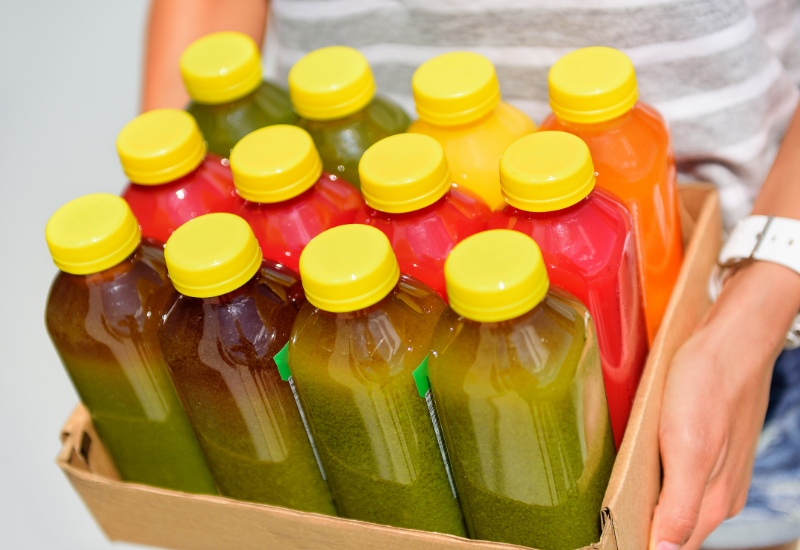
It’s not too hard to find a smoothie or a juice that has upwards of 300 calories and 60g sugar. A 12 oz Coke has 41g for reference. If your juice or smoothie does not have added protein or fat, you’re essentially consuming the calories of a meal but with out the satiating benefits. Be mindful of the ingredients and watch for added/unnecessary sugar. Puree or another condensed fruit juice are generally the culprits.
In Summary: Is it Healthier to Juice or Blend Fruits and Veggies
I hope you fully understand now that they are both good for you and how to use a combination of the two. Green juice first thing in the morning can be an excellent way to kick start your day. Smoothies and soups can be amazing meal replacements. It’s about finding the recipes you like the most and the ones that work best for your lifestyle.
About The Author
Teresa Howes
I’m a board certified holistic nutritionist, certified personal trainer, plant forward & flexatarian lifestyle enthusiast and self proclaimed Veggie Ninja. I’m here to inspire and illustrate how delicious, simple and fun healthy living can be!
Related Posts
Gluten Free Acorn Squash Flatbread Recipe
I am so excited to share this unique Acorn Squash Flatbread recipe with you! As…
December 6, 2021Cancer Fighting Smoothie Recipe
I do think it’s aggressive to title this post: Cancer Fighting Smoothie Recipe…
July 25, 2021